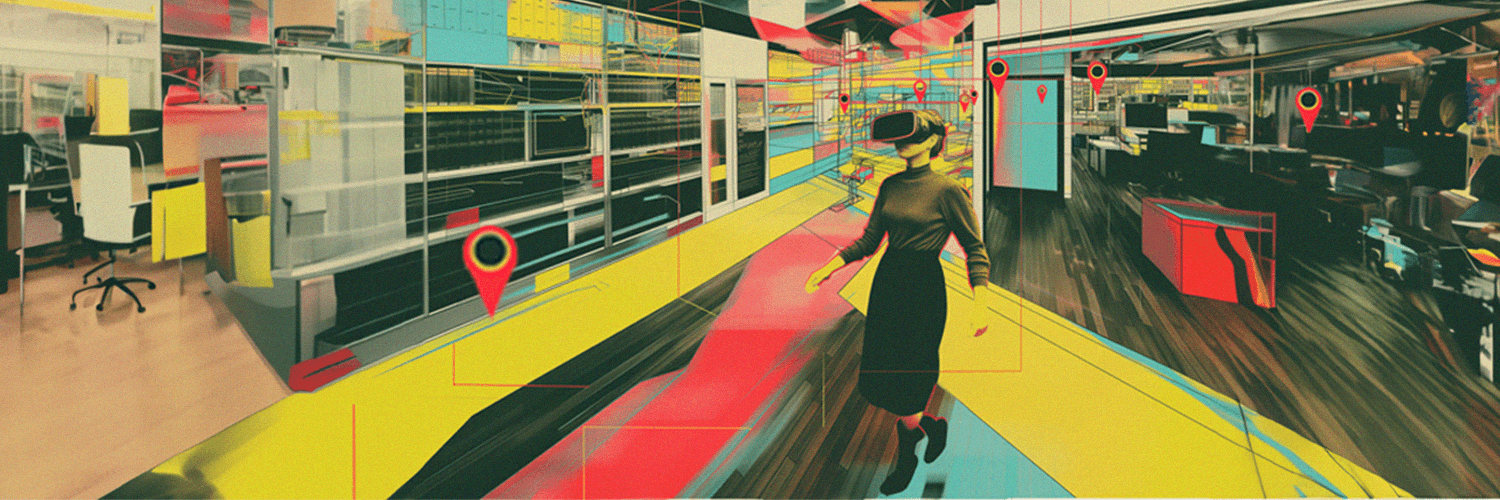





























How does a parking booking system work?
Open your parking booking app
First, access your office parking booking system using a desktop or mobile app.
Find and book your parking lot
Search for and view the availability of parking spaces in real-time. Select one that meets your needs and book it for the desired date and time.
Don't forget to check in
Your organization might require you to check in when the booking time starts. This step ensures the parking spot is used as intended and frees it up for someone else if you don't confirm the reservation.
Flexible office parking space management
Yarooms brings a new level of convenience to office parking management.

Flexible parking booking
Enable on-the-spot bookings or assign permanent parking spots to your team.

Parking space features
Specify features of each parking lot (like electric car charging availability) for a streamlined booking experience.

Parking rules
Set and enforce parking rules to ensure spaces are booked in accordance to your parking management policy.

Real-time availability overview
See the real-time parking availability overview using the interactive map.

On-the-go parking booking
The parking booking system is accessible on both desktop and mobile apps, allowing for on-the-go reservations.

Utilization analytics
Get insights into how parking spaces are used and optimize office parking management with data.

Feedback survey
Send out a quick questionnaire to assess employee satisfaction with booking process and parking management.
Ready to see the big picture?
Learn how thousands of forward-thinking organizations use YAROOMS to manage
their workplaces. Join us for a Live Demo or watch the On-demand Platform Tour.
their workplaces. Join us for a Live Demo or watch the On-demand Platform Tour.
Parking booking solution benefits for everyone your workplace
Parking booking solutions streamline parking space reservations, greatly improving the workplace experience for employees, facility managers, and property owners.
✔ For employees
Parking booking systems provide a stress-free start to the day and offer flexibility to accommodate varied space needs.
✔ For facility managers
Booking apps optimize parking space utilization and offer valuable insights into usage patterns, improving security and resource management.
✔ For property owners
Efficient parking management can increase property value and generate additional revenue while contributing to sustainability goals by reducing congestion and emissions.


Our insights on parking management
Choosing the right office parking booking system is no small feat.
We collected a few insightful resources to help you identify your needs and navigate the sea of options.
Continue your research:
Parking booking systems: FAQ
Answering the most popular questions about parking booking systems in the office:
A parking booking system is a digital solution designed to facilitate the reservation of parking spaces through software or online platforms. These systems allow users to search for, reserve, and sometimes pay for parking spots in advance, either through a website, a mobile app, or another digital interface. Here are some key features and benefits of parking booking systems:
- Online Reservations: Users can book parking spaces online before reaching their destination, ensuring a guaranteed spot upon arrival. This is particularly useful in crowded urban areas, airports, corporate offices, and tourist attractions.
- Real-time Availability: The system provides real-time information on the availability of parking spaces, helping users avoid the hassle of searching for a spot in full or overcrowded parking areas.
- Time and Cost Efficiency: By allowing pre-booking, these systems can save time for the users and potentially offer discounts for advance payments or long-term bookings, making parking more cost-effective.
- Access Control and Security: Integrated with access control systems, parking booking systems can enhance the security of parking facilities by restricting access to only those who have made reservations.
- Efficient Space Management: These systems provide valuable data on parking usage patterns for operators, helping them manage their spaces more efficiently and adjust pricing based on demand.
- Eco-friendly: By reducing the time spent searching for parking, these systems can contribute to lower carbon emissions, making them an environmentally friendly option.
Overall, parking booking systems aim to streamline the parking process for users and operators, offering convenience, efficiency, and improved utilization of parking resources.
Parking management refers to planning, regulating, and administrating parking spaces to ensure optimal use of available resources. It encompasses a wide range of strategies and practices designed to address the various challenges associated with parking, including scarcity of spaces, congestion, environmental impact, and the needs of different users. Effective parking management aims to improve accessibility, reduce traffic in congested areas, enhance urban mobility, and support sustainable transportation goals. Some critical components of parking management include:
- Parking Policies and Regulations: Implementing rules that govern where, when, and how parking is allowed. This can include parking time limits, permit systems, and restrictions in certain areas to prioritize specific needs, such as residential parking or short-term visitor parking.
- Pricing Strategies: Adjust parking fees based on demand, location, and time to manage parking space availability and encourage alternative transportation modes. Dynamic pricing models can be employed to reflect peak and off-peak periods.
- Technology and Innovation: Utilizing technology to improve parking efficiency and user experience. This includes automated parking systems, mobile app-based payment and reservation systems, and real-time information on parking availability.
- Design and Layout: Planning and designing parking facilities to maximize space utilization, ensure safety, and integrate seamlessly with the surrounding environment. This can involve the development of multi-story parking structures, underground parking, and the use of green parking solutions.
- Sustainability Practices: Implementing eco-friendly practices, such as electric vehicle charging stations, bike parking, and incentives for carpooling or using public transit, to reduce the environmental impact of parking.
- Enforcement and Compliance: Ensuring that parking rules and policies are followed through monitoring, enforcement actions, and penalties for violations.
By effectively managing parking, cities and organizations can alleviate congestion, improve accessibility, support economic development, and enhance the quality of life for residents and visitors.
Managing parking problems in an office requires a strategic approach that balances the needs of employees, visitors, and the organization itself. Several strategies can be effectively applied to address parking issues:
- Conduct a Parking Demand Assessment: Evaluate current parking demand and availability.
- Implement Flexible Work Arrangements: Encourage flexible work hours or remote work options.
- Optimize Parking Space Allocation: Prioritize parking space based on need and implement a permit system.
- Promote Carpooling and Ridesharing: Offer incentives for carpooling or using rideshare services.
- Increase Accessibility to Public Transportation: Provide information and subsidies for public transit.
- Utilize Technology for Parking Management: Implement smart parking solutions for real-time availability and reservations.
- Expand or Optimize Existing Parking Facilities: Consider expanding or reconfiguring parking lots to increase capacity.
- Partner with Nearby Facilities: Negotiate shared parking agreements with nearby businesses or facilities.
- Implement a Parking Fee: Charge for parking to discourage unnecessary use and fund improvements or alternatives.
- Foster a Culture of Alternative Transportation: Promote biking, walking, and public transit use with amenities and programs.
By applying these strategies, you can effectively manage parking problems in the office, ensuring that parking resources are used efficiently and equitably while supporting sustainability and employee well-being.
Calculating the number of parking spaces needed for an office involves considering various factors, including local zoning laws, the business's nature, the building's size, the number of employees, and expected visitors. Here is a general approach to estimating parking requirements for an office space:
- Check Local Zoning Regulations: Start by checking local zoning ordinances or regulations, as these often specify the minimum number of parking spaces required per square footage of office space or number of employees. This can vary significantly depending on the location.
- Consider the Office Size and Type: The size of the office (in square feet) and the type of office work (e.g., open plan, individual offices, mixed-use) can influence the density of employees and the need for parking. More densely populated office spaces may require more parking.
- Estimate the Number of Employees: Calculate the maximum number of employees working at the office at any given time. This includes full-time, part-time, and any remote workers who might come into the office occasionally.
- Account for Visitors: Estimate the average number of visitors to the office daily. This could include clients, delivery personnel, and other guests.
- Use a Parking Ratio: Parking ratios are often used to estimate parking needs, expressed as the number of parking spaces per 1,000 square feet of office space or employee. For example, a typical ratio might be 3 to 4 spaces per 1,000 square feet of office space, one space per employee, and additional spaces for visitors.
- Adjust for Shared Use and Peak Times: If the office shares parking with other businesses or peak times when parking demand is higher, adjust your calculations accordingly. Shared parking can reduce the spaces needed if businesses have different peak hours.
- Consider Alternative Transportation: If the office is in an area with good public transportation, or if there are incentives for carpooling or biking, you might be able to reduce the number of parking spaces needed.
- Plan for Future Growth: Anticipate the company's future growth and consider adding additional spaces to accommodate new employees and business expansion.
To calculate a basic estimate, you can use a formula based on local requirements or industry standards, adjusting as necessary. For example, if the local zoning requires four spaces per 1,000 square feet for an office building, and your office is 10,000 square feet, you would need at least 40 parking spaces.
Remember that these are general guidelines, and specific requirements can vary. Always consult with local planning authorities and consider hiring a professional planner or architect for precise planning and compliance with local codes.


1b1a.png)
b613.png)










